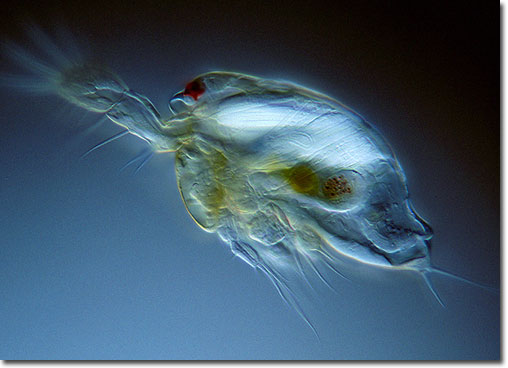|
The reproductive process of copepods varies, but is most often sexual. Egg sacks usually develop soon after copulation and are carried outside of the bodies of females. The number of eggs they contain is species dependent, but they generally hatch into larvae after a period of a few days. These early larvae are referred to as nauplii and may be as little as 20 micrometers in diameter. At first, they possess simple, unsegmented bodies, three pairs of appendages, and a solitary eye. However, the larvae soon undergo a series of five molts, eventually becoming what are known as copepodids. In this form, the developing organisms appear similar to the adults but still lack a full number of limbs, and in parasitic species this is typically the infective stage of the organism. The proper number of limbs and complete segmentation are finally acquired after another series of molts, which results in a sexually mature adult.
|
